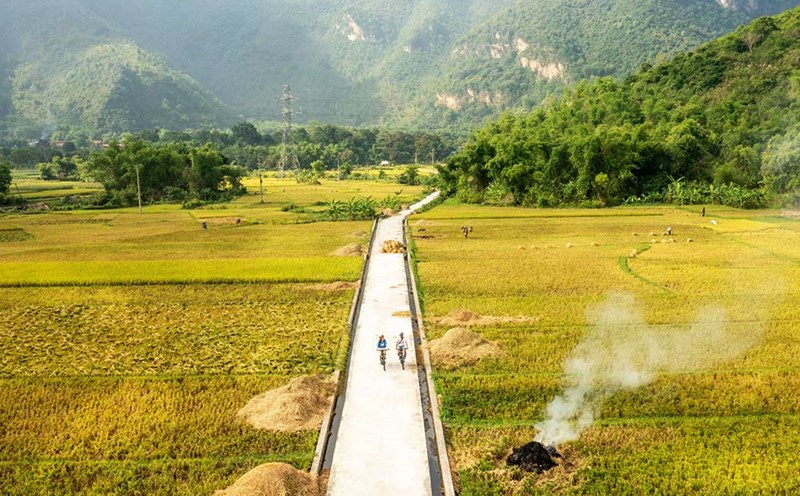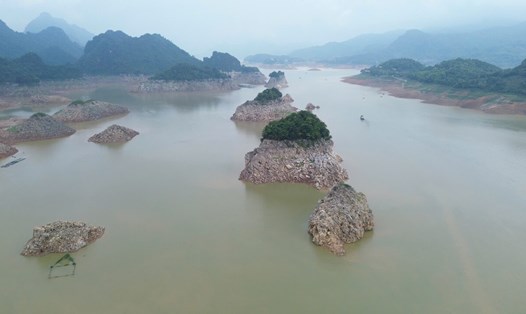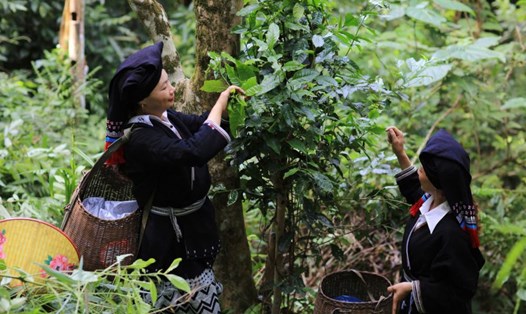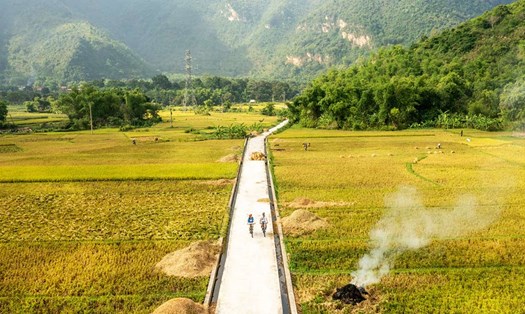Located in Vay Nua commune, Da Bac district, Hoa Binh, Thac Bo temple has long been known as a sacred destination in the middle of the Da River hydroelectric reservoir.
During the flood season, visitors can easily visit the temple by boat, crossing the peaceful blue lake. But from May to July every year, when the water recedes, the scenery here changes suddenly and full of surprises.
The temple appears to no longer be in the middle of the lake as in the familiar water-based painting.
The water level is low, the dry rocky banks are clearly visible, and the cliffs are standing around the temple. The moss-covered stone steps leading to the main hall are now sharp, dry and pristine.
The space here has become ancient and harsh, bringing a feeling of both strangeness and majesty.

From the center of Hoa Binh city, visitors have to travel more than 30 km by road to ports such as Thung Nai (Cao Phong district), or Bich Ha (Thai Thinh ward).
During the flood season, boats can approach the foot of the temple. But when the water is low, the journey becomes difficult, boats can easily get stuck with rocks, and some sections have to be walked or climbed slopes to continue.
"There are days when the water level drops too low, customers have to walk hundreds of meters on the dry rock to get to the boat dock," said Mr. Nguyen Van Cuong, a boat boat boatman.
Although the road is not easy, many people still come to Co Waterfall to worship and experience the unique beauty that only appears in the dry season.
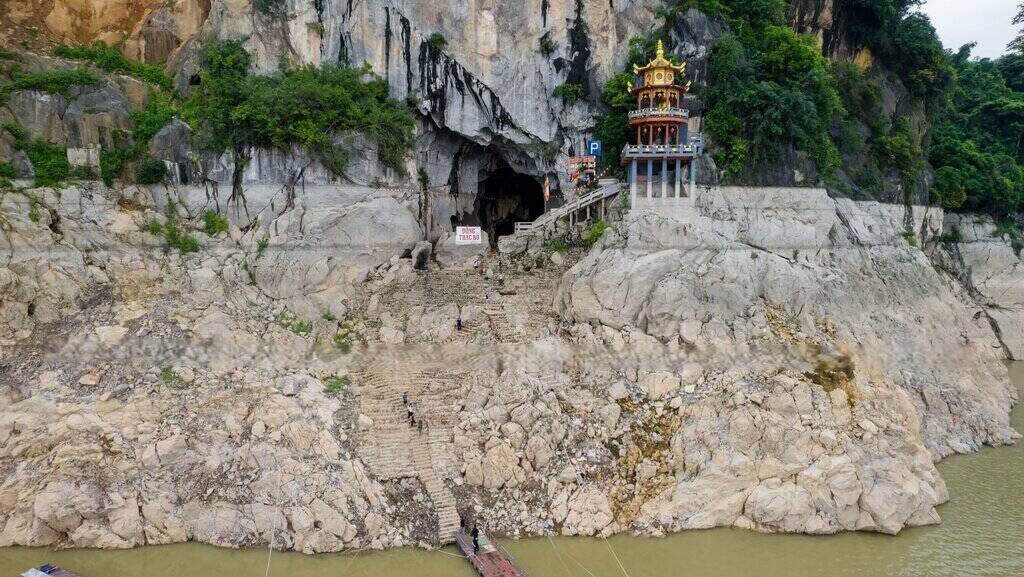
Mr. Nguyen Van Dung, a tourist from Nam Dinh, shared: "I have been to the Co Waterfall three times, but this is the first time I have seen the temple fully revealed like this. The climbing route is a bit tiring but worth it.
Similarly, Ms. Tran Thu Ha (Hanoi) said: "It is really difficult to walk, especially the stone steps built upside down, but when you get there, it is very peaceful. This season, there are few people, the space is quiet. I feel more sacred than during the flood season.
The way to the temple in the dry season is a challenge for both physical and mental health. The plain, steep stone steps force pilgrims to be careful with every step. Behind the temple, the grottos and open-air terraces further highlight the strong, unconventional beauty of the project in the midst of pristine nature.
Visitors not only come to offer incense to pray for peace, but also to witness a "currently intact" Bo Waterfall, where ancient stone layers tell the history of the formation of the land, and experience the feeling of walking in the middle of a lively geological museum.
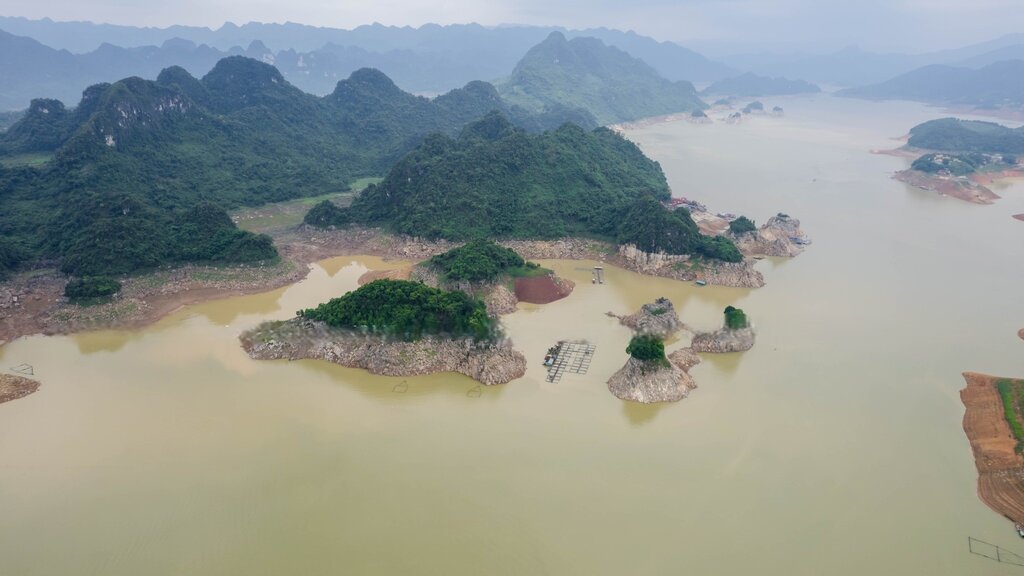
Speaking with Lao Dong, Mr. Sa Van Si, Chairman of the People's Committee of vay Nua commune, said: "This year is the first time the water level of the Da River has receded so much, in some places up to 40m. This makes it difficult for people and pilgrims to travel.
However, it is during the dry season that the landscape around the temple area becomes unique and different. We are coordinating with the district level to assess the potential for dry tourism, aiming to build sightseeing and experience routes suitable for terrain conditions".
According to Mr. Si, the local government is also strengthening the work of ensuring the safety of visitors, especially at steep climbing spots and slippery stone steps, while supporting people to develop livelihoods from sustainable tourism activities.



